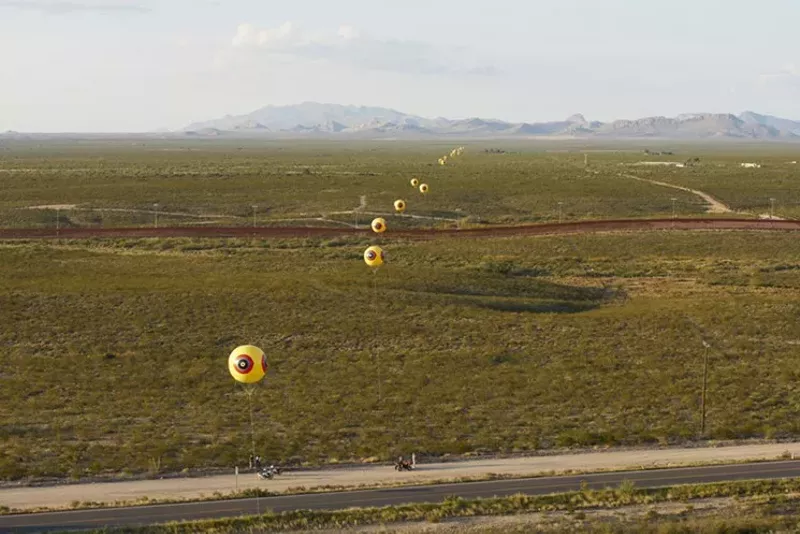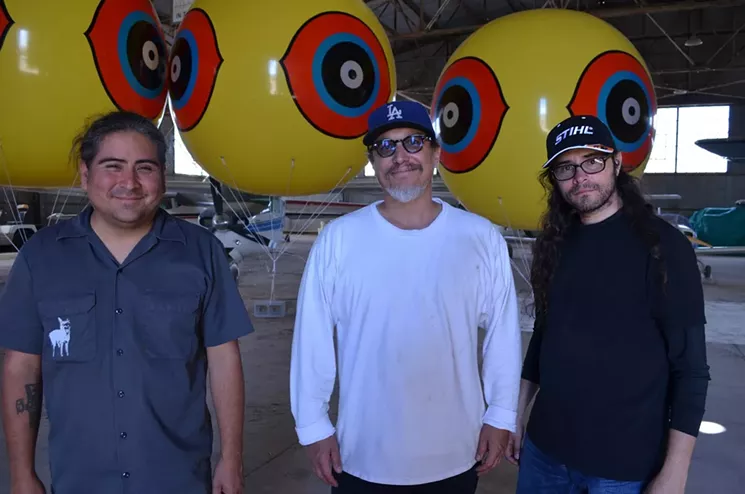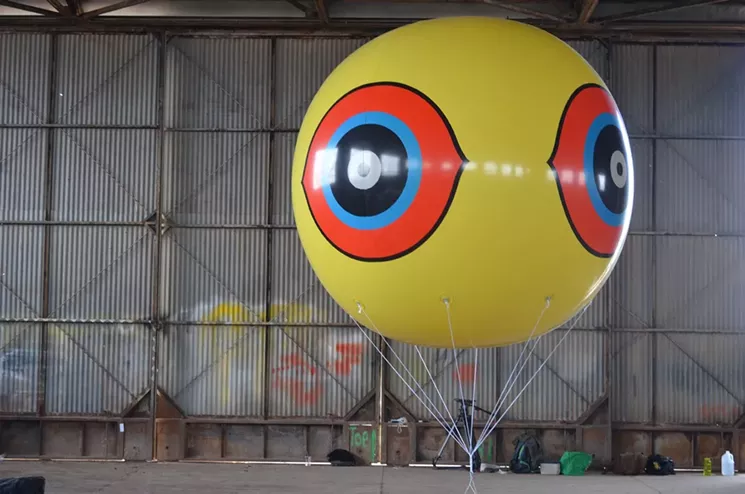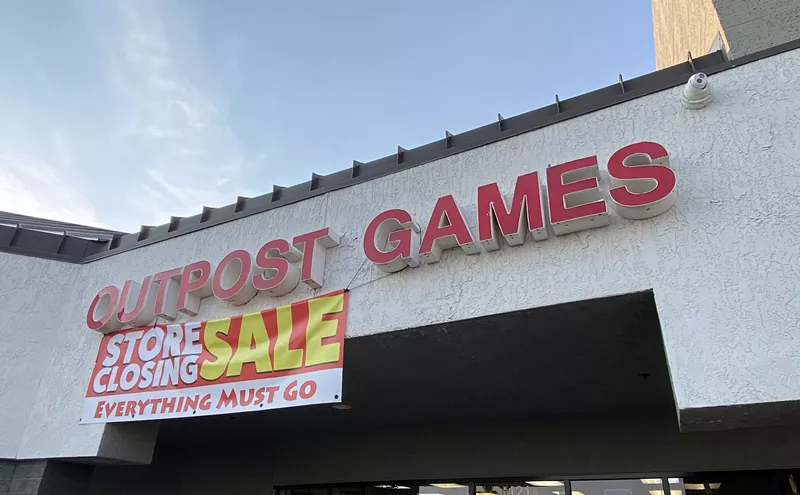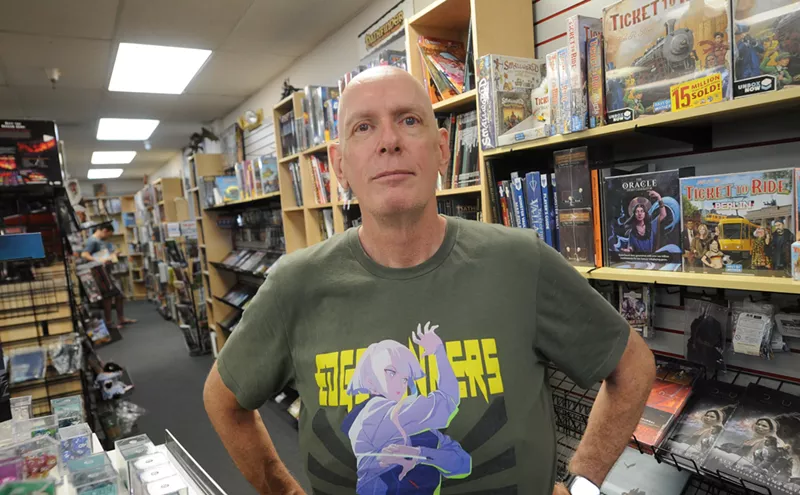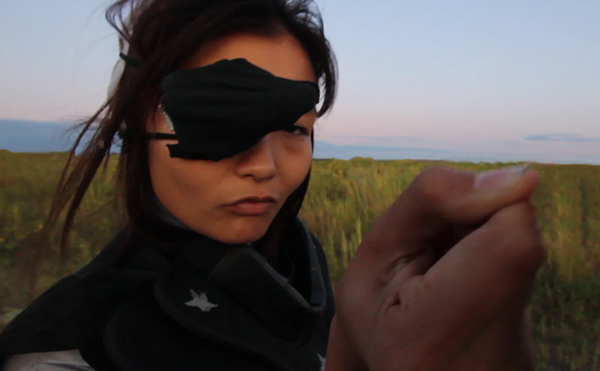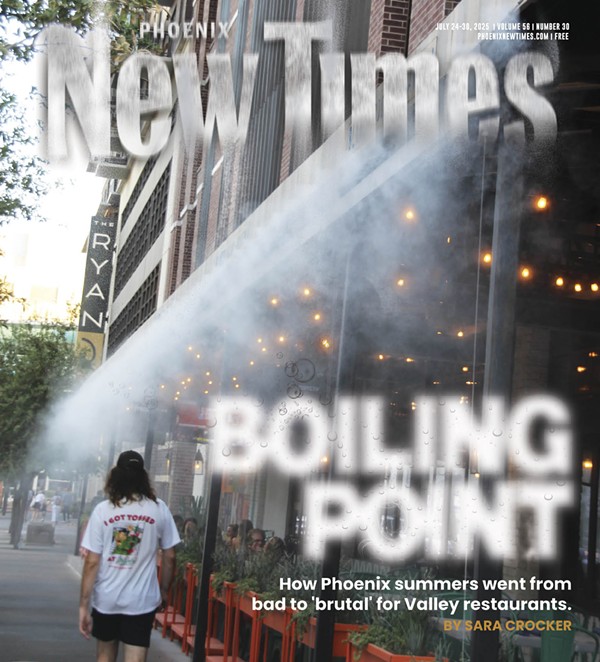For just a few days, from a high point along Highway 2 in the Mexican town of Agua Prieta, the view looking north and south was particularly breathtaking. From there, people could see not only the desert landscape awash in various shades of green and gold, but also two lines of 13 balloons hovering 50 feet in the air — bisecting the border fence between the United States and Mexico that separates Agua Prieta from Douglas, Arizona.
The balloons were part of a temporary land art installation titled Repellent Fence, created by the artist collective Postcommodity. Comprising 26 large-scale helium-filled balloons aligned in a jagged row running one mile in either direction, the installation was in place for just three days, from October 10 to October 12, after a planned October 9 launch was postponed due to high winds. A singular sort of artwork, Repellent Fence was a spectacle that essentially connected the two countries, with the potential to create ripple effects for years to come.
Repellent Fence — or Valla Repelente in Spanish — was a decade in the making.
Postcommodity artists Raven Chacon, Cristóbal Martínez, and Kade L. Twist spent years traveling the borderlands in search of communities, one on each side of the border, where they could give physical space to their conceptual framework, ultimately settling on Douglas and Agua Prieta. The artists conceived Repellent Fence as a suture stitching together communities divided by not only America’s border fence, but also the inflamed rhetoric infusing contemporary dialogue about immigration.
It took two years of working within these border communities to lay the foundation, which included mundane elements such as navigating government bureaucracy as well as meaningful elements such as engaging local artists and community members. Repellent Fence collaborators included the ASU Art Museum, which will present a Postcommodity exhibition in 2017.
The balloons used to create Repellent Fence, which feature stylized eye images drawn from “scare-eye” balloons mass-produced and sold to consumers as a means of repelling unwanted birds, reflect the iconography of indigenous cultures — prompting consideration of attempts to marginalize, repel, or destroy indigenous peoples within and beyond the borderlands.
The artists worked for two days with teams of community members and supporters to prepare and install 13 10-foot-diameter balloons each in Agua Prieta and Douglas. First, the balloons (made of PVC) were filled with helium, then tethered in place overnight before being moved to the desert using pickup trucks, where they were weighted down to keep them in place.
Overlooking Repellent Fence from geographical high points in each country, the uniformity of the desert landscape was apparent. Hence the installation conveyed the arbitrary nature of borders and the common humanity of those who live on either side of the fence. But because of its ephemeral nature, the physical piece itself is no longer there to inspire reflection on such things.
Whether the artists’ vision of breaking down barriers in the borderlands is fully realized depends on whether and how the two communities continue to engage in dialogue and shared activities such as the bi-national art walk that grew out of Postcommodity’s work in Douglas and Agua Prieta.
It’s likely the process of creating and installing Repellent Fence will effect more change than its physical presence for a three-day duration. Rather than an endpoint, Repellent Fence serves as a marker for one point in time within an ongoing dialogue about the borderlands and those whose lives are shaped by the presence of the fence.
It will be up to those who collaborated with the artists, and those who witnessed the work in its Sonoran desert setting, to continue conversations and actions that engage an ever-broader swath of humanity in understanding the ways ideological and physical barriers separate people — and ways people can work individually and collectively to break through those barriers.
In this way, Repellent Fence was more about process than product — and the full measure of its efficacy may take years to unfold and assess.
The actual installation was a contemporary iteration on the land art movement launched during the late 1950s and early 1960s, which sought to counter pop art’s fusion of fine art with popular culture by creating works for which the land and natural materials served as primary media.
Its practitioners included Robert Smithson, whose Spiral Jetty (1970) in Utah’s Great Salt Lake basin is one of the movement’s best-known works, and James Turrell, an artist represented by Lisa Sette Gallery in Phoenix whose Roden Crater project started in 1972 involves the ongoing transformation of a volcanic crater into a large-scale art work.
But Postcommodity delivers land art with a twist. Rather than using the land or natural materials such as rocks, sand or twigs as media, they turn the movement that decried the use of plastics in art-making on its head by using only artificial materials to create Repellent Fence, then setting the work within a vast desert expanse.
The use of eye imagery connects Repellent Fence to both the long trajectory of history and contemporary culture. Eye iconography is prevalent in works of art from diverse cultures across the span of human civilization, as well as today’s digital culture in which logos dominate the visual landscape.
Those who consider Repellent Fence within the context of the CBS eye, which has evolved since its 1951 debut, may ponder the impact of newscasts on ways we see the world. Others may feel prompted by the work, now on view only via online photographs, to reflect on the role of surveillance in the modern state.
While the balloons seemed so large when viewed up close, they appeared only as small dots when looking across one side of the border to the other, serving to remind viewers that personal and communal perspectives shift in time and space. The border is an artificial edifice; the migrant hasn't always been the other.
For those who participated in preparing or installing Repellent Fence, the experience offered a unique window into the art-making process — including ways artists can collaborate with fellow artists or others, and ways particular properties of materials and the environment can impact a work's final form.
Ultimately, Repellent Fence is a reflection on vulnerability. Created using balloons that could be popped by thorny plants or whisked away by fierce winds, it signifies the fragility of life within such harsh desert environments. That the installation was delayed due to high winds only reinforced the primacy of nature and the need to collaborate with it, rather than seeking to control it.
Find more information about Repellent Fence on the Postcommodity website.

Audio By Carbonatix
[
{
"name": "GPT - Billboard - Slot Inline - Content - Labeled - No Desktop",
"component": "21251496",
"insertPoint": "2",
"requiredCountToDisplay": "2"
},{
"name": "STN Player - Float - Mobile Only ",
"component": "21327862",
"insertPoint": "2",
"requiredCountToDisplay": "2"
},{
"name": "Editor Picks",
"component": "16759093",
"insertPoint": "4",
"requiredCountToDisplay": "1"
},{
"name": "Inline Links",
"component": "17980324",
"insertPoint": "8th",
"startingPoint": 8,
"requiredCountToDisplay": "7",
"maxInsertions": 25
},{
"name": "GPT - 2x Rectangles Desktop, Tower on Mobile - Labeled",
"component": "21934225",
"insertPoint": "8th",
"startingPoint": 8,
"requiredCountToDisplay": "7",
"maxInsertions": 25
},{
"name": "Inline Links",
"component": "17980324",
"insertPoint": "8th",
"startingPoint": 12,
"requiredCountToDisplay": "11",
"maxInsertions": 25
},{
"name": "GPT - Leaderboard to Tower - Slot Auto-select - Labeled",
"component": "17012245",
"insertPoint": "8th",
"startingPoint": 12,
"requiredCountToDisplay": "11",
"maxInsertions": 25
}
]

